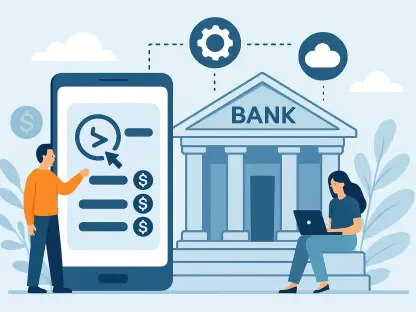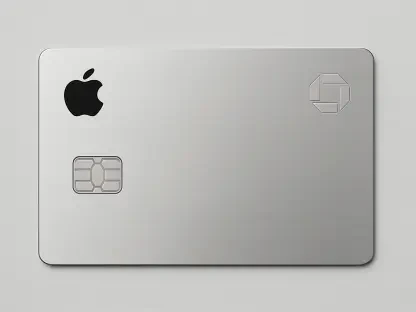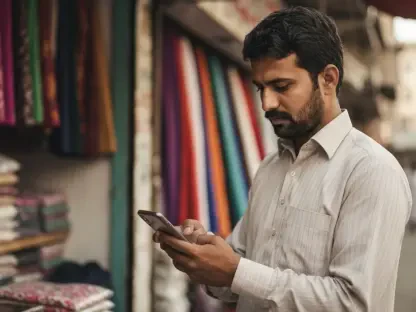The financial landscape in the Philippines is undergoing a remarkable transformation as the nation gravitates toward a cashless society, driven by innovative technology, progressive governmental policies, and increasing consumer demand. According to the Bangko Sentral ng Pilipinas (BSP), digital payments now account for a significant portion of total transactions. By 2024, the volume and value of digital transactions rose to 57.4% and 59.0%, respectively, surpassing the ambitious target set by the BSP. This surge in digital financial transactions marks a shift in consumer behavior, moving away from traditional cash-based methods and toward embracing a digital payment ecosystem. The Philippines is poised at the cusp of a cashless future, with current trends suggesting that the country is ready to embrace this financial evolution.
Technological Advancements Facilitating Cashless Transactions
The growth of digital payments can largely be attributed to technological advancements that have equipped the population with tools for digital financial interactions. Platforms like QR Ph, InstaPay, and PESONet have been pivotal in pushing the envelope for digital transactions, facilitating easy, quick, and secure payments for everyday financial activities. These technologies align with the needs for convenience and reliability, driving the consumer transition to digital means. Businesses, in particular, have seen remarkable improvement in operational efficiency and customer service, thanks to the streamlined processes enabled by these payment platforms. Electronic transactions are not just a metropolitan trend; they have permeated rural areas, expanding accessibility and bringing financial services to previously underserved regions.
Digital payment initiatives introduced by the BSP, such as Project Nexus and Project Agila, embody the central bank’s commitment to integrating more advanced systems within the financial infrastructure. These initiatives are designed to enhance cross-border payment capabilities and promote seamless and real-time international financial transactions. By collaborating with neighboring countries, including India, Malaysia, Singapore, and Thailand, the BSP aims to expand the reach and capabilities of digital payment solutions. Such initiatives further align with the goals of regional economic cooperation and integration, potentially positioning the Philippines as a significant player in the ASEAN digital economy.
Government and Regulatory Support
The Philippine government, along with the Bangko Sentral ng Pilipinas, has taken significant strides in creating a supportive regulatory and policy framework that fosters digital financial adoption. Regulations such as Circular No. 1195, which stipulates swift turnaround times for electronic fund transfers, and Circular No. 1198, focusing on licensing for Operators of Payment Systems, play crucial roles in assuring consumer protection and securing transaction processes. These regulations are part of a broader agenda to bolster consumer confidence and minimize transactional risks, which are critical for the mass adoption of digital payments. Additionally, government efforts to digitize their processes have seen a considerable uptake, notably with 97.2% of government payments processed electronically. This transformation sets a powerful precedent, illustrating the range of possibilities and efficiencies available through digital transition.
In spearheading the push for digital interactions, policymakers underscore the need for inclusivity, ensuring that financial digitalization encompasses all strata of society. This dedication has resulted in “person-to-everyone” transactions becoming increasingly common, demonstrating equitable access to digital financial services across different groups. Private sector partnerships play a vital role in complementing policy changes, as businesses adapt and provide supporting infrastructures critical for a flourishing digital ecosystem. Collectively, these efforts reflect a coalesced approach toward facilitating a cashless economy, one that not only envisions inclusivity but underscores it as a pillar within the Philippines’ evolving financial narrative.
Consumer Adoption and Behavioral Shifts
Consumer adoption has accelerated the shift toward a cashless society in the Philippines, marked by a significant change in how people interact with money and financial services. A majority of digital transactions in the country are comprised of merchant payments, making up 66.4% of the total. Person-to-person (P2P) transactions account for 20.6%, and business-to-business (B2B) payments stand at 6.2%. This distribution illustrates a broad range of digital payment applications, revealing how consumers are progressively integrating digital solutions in their everyday financial activities. The rise in consumer comfort with digital tools is further supported by user-friendly interfaces and enhanced security features offered by modern digital payment platforms.
More than just convenience, this behavior shift toward digital payments signals a growing digital fluency among consumers. Enhanced digital literacy initiatives and public awareness campaigns have played a critical part in this transition, equipping users with the necessary understanding and skills to navigate the digital financial landscape efficiently. This transformation is underpinned by consumer trust across digital platforms, bolstered by robust security measures, intuitive applications, and the inherent convenience of contactless transactions. As digital payments become the norm, this increased consumer confidence promises sustained growth and further innovation in financial technology solutions.
Infrastructure Developments Supporting a Cashless Future
The digital payment infrastructure in the Philippines is undergoing substantial development to keep pace with the growing demand for cashless transactions. Initiatives such as the Automated Fare Collection System (AFCS) demonstrate the convergence of technology between transportation and finance, planning the integration of interoperable QR payments across public transport. Expected by 2027, this system is set to enhance daily commuter experiences, reducing waiting times and facilitating seamless, contactless payments. Such infrastructural upgrades represent the synthesis of technology and convenience, reflecting on how consumers engage with services in an increasingly cashless society.
The implementation of the ISO 20022 standard further exemplifies efforts to improve payment messaging protocols and boost the efficiency and accuracy of digital transactions. By refining these processes, stakeholders aim to achieve faster settlement times and superior risk management, benefits that extend beyond financial institutions to end consumers. These changes are designed to optimize the system’s response to growing transaction volumes and complexity, paving the way for smoother payment experiences. By focusing on improving digital infrastructure, the Philippines sets a clear path toward making cashless transactions an indispensable element of the nation’s economic fabric.
The Future of Cashless Payments in the Philippines
The surge in digital payments is primarily driven by technological advancements equipping people with tools for digital financial interactions. Platforms like QR Ph, InstaPay, and PESONet have been crucial in advancing digital transactions, offering quick, easy, and secure methods for routine financial activities. The convenience and reliability of these technologies have encouraged consumers to shift to digital payment methods. Businesses have notably improved their operational efficiency and customer service, benefitting from the streamlined processes offered by these platforms. Electronic transactions have transcended metropolitan areas, reaching rural regions and enhancing financial service access in previously underserved communities.
The Bangko Sentral ng Pilipinas (BSP) demonstrates its commitment to advancing financial infrastructure through initiatives like Project Nexus and Project Agila. These efforts aim to boost cross-border payment capabilities, encouraging seamless, real-time international financial transactions. By collaborating with countries such as India, Malaysia, Singapore, and Thailand, the BSP seeks to enhance the scope and efficiency of digital payment solutions. Such initiatives align with regional economic cooperation goals, potentially establishing the Philippines as a key player in the ASEAN digital economy.









